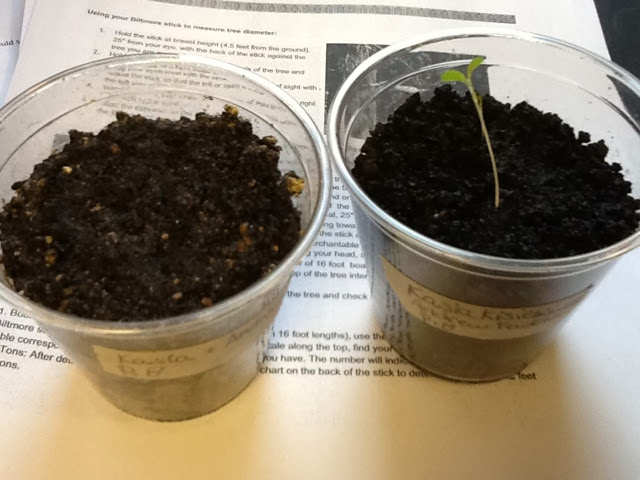This was mixed in a small tube to make the mixing process easier:
Six lettuce seeds were planted in the resultant mixed soil (right) and watered around once a day over the course of approximately one week:
By the end of the experiment, nothing appared to have grown in our "remediated" sample (left), proving that either we added too much of certain elements to the soil, or the original soil was already fairly fertile:
Our sample was likely already fairly fertile prior to remediation, as there were earthworms, sow bugs, and other organisms that showed signs of healthy, fertile soil. Another connection to an earlier test was the pH level, shown to be ~6.0 prior to remediation but increased for remediation. Although not an average 7.0, 6.0 is itself healthy so remediation of this was likely not necessary. The original soil was found to be mostly silt with a pH of 6.0, so a large amount of sand and clay was added in an attempt to create a loam, pH addition was added to try and bring it up to 7.0, and a small bit of plant food was added for good measure. This proved unsuccessful as nothing grew by the conclusion of the experiment, showing too much of these elements was added and the original may have just been good as it was, as plants did develop in the controlled experiment.
- Andrew




No comments:
Post a Comment